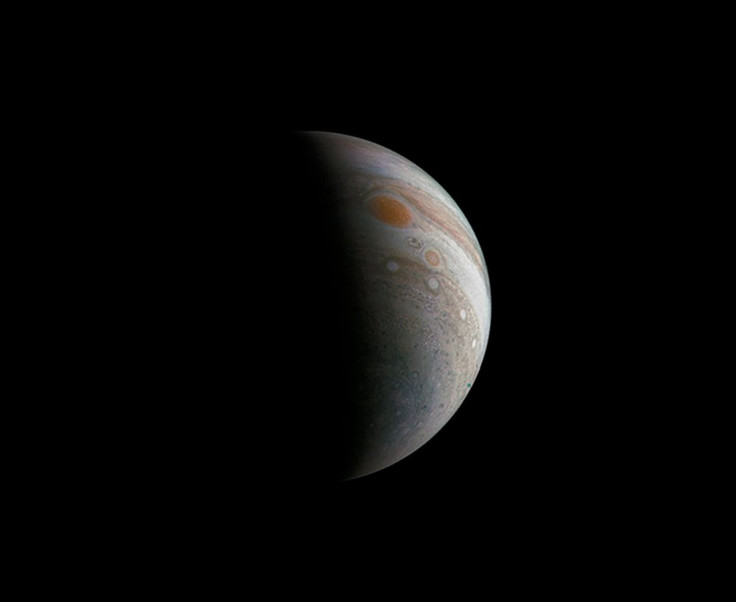Jupiter’s Great Red Spot Revealed In Stunning New JunoCam Image

Jupiter’s Great Red Spot has been captured in a stunning new image by NASA’s Juno spacecraft. The photograph, created by a citizen scientist named Roman Tkachenko using data gathered by instruments onboard Juno, was released by the space agency on Friday.
The image was taken from a distance of over 285,000 miles on Dec. 11, when the solar-powered spacecraft performed its third close flyby of the gas giant.
“You can also see a series of storms shaped like white ovals, known informally as the ‘string of pearls.’ Below the Great Red Spot a reddish long-lived storm known as Oval BA is visible,” NASA said in a statement accompanying the image.
The Great Red Spot — a persistent and gigantic storm that has been rumbling in the gas giant’s southern hemisphere for at least the past 300 Earth years — is just one of the many defining characteristics of the planet’s dense and dynamic atmosphere. Since this vortex, which is large enough to engulf three Earths, was first spotted in 1664, scientists have noticed that it has been shrinking.
In 2015, images obtained using NASA’s Hubble Space Telescope confirmed that the Great Red Spot was weakening, and was assuming a more circular shape. The images, taken over a span of 10 hours, also revealed the storm was contracting at a faster-than-usual rate.
The photograph released Friday was captured by the JunoCam instrument — a high-resolution color camera specially designed to work on a spinning spacecraft. At Juno's closest approach, JunoCam will snap photos from only 3,100 miles above Jupiter’s clouds.
The raw images taken by the camera so far are publicly available here.
“This is really the public's camera. We are hoping students and whole classrooms will get involved and join our team,” Scott Bolton, Juno principal investigator at the Southwest Research Institute in San Antonio, said in December 2015. “This is citizen science at its best.”
Juno was launched in August 2011 and traversed nearly 2 billion miles of space to reach Jupiter. The primary goals of the $1.1 billion mission are to find out whether Jupiter has a solid core, and whether there is water in the planet's atmosphere — something that may not only provide vital clues to how the planet formed and evolved, but also to how the solar system we live in came into existence.
© Copyright IBTimes 2025. All rights reserved.






















